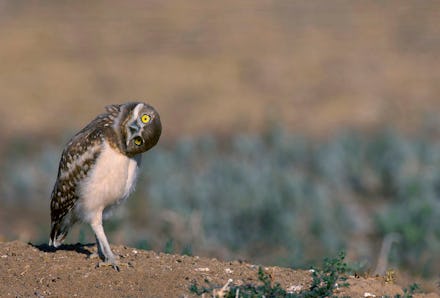America's Birds Are in Serious Danger

The news: By the year 2080, over half of America's familiar birds may be in serious trouble — including the country's national bird, the bald eagle.
That's the grim news from the National Audubon Society's latest report, which examined how climate change could potentially affect 588 of North American bird species. According to the report's estimates, 314 of these species — classified as climate endangered or threatened — are set to lose 50% or more of their climatic range in the coming decades.
"Unless action is taken to abate the cause of climate change and to make smart investments in the landscape to protect these birds, local losses seem unavoidable and for many already endangered birds, this could even lead outright extinction," Audubon chief scientist Gary Langham told Mic via email.
What does this mean? For the report, researchers collected over 40 years of climate data and bird censuses conducted by Audubon and the U.S. Geological Survey. Based on this analysis, the team was able to create projections of how different species' migration routes and habitats would be affected by changing weather patterns in the next few decades.
The result is concerning, to say the least: The bald eagle, for instance, is set to lose as much as 75% of its current climatic range, while the common loon (as depicted in the GIF above) may not be able to breed in the lower U.S. altogether.
Other species that are especially threatened include the three-toed woodpecker, the northern hawk owl, the northern gannet, Baird's sparrow, the rufous hummingbird and the trumpeter swan. These species are estimated to lose more than 90% of their current territory.
Why is this happening? The overall health of an animal population is an important indicator of how the ecosystem in general is faring. In this case, such significant losses suggest that climate change is affecting the ecosystem at multiple levels, including habitat loss, drought and changes in the food chain.
"We know that all animals and plants are finely tuned to their current climates. Part of being successful in the competitive natural world is this fine tuning. And so, when it gets too hot, too cold, too wet or too dry across the year, it can throw off the bird in ways that translate into reduced breeding success or survivorship," Langham told Mic.
"And don't forget that if half of all birds are threatened by fundamentals like climate, so too is everything else that depends on natural systems. It suggests everything people depend will be disrupted too," he continued.
What can be done? While climate change will need to be tackled with a multipronged approach, Langham has a suggestion specifically for bird conservation: Focus not only on the birds that are endangered right now, but the ones that will be threatened in the near future.
"The important thing is to act now. There is still time to take action in our daily lives and collectively to reduce GHGs and act to protect the key places birds will most depend upon," Langham said. "We can prepare and protect the land and reduce our contributions to global warming. I have hope that we will act and avert the worst impacts because it is in our own interests as much as the birds."
If not, America's future generations might have a much harder time finding their own national bird.